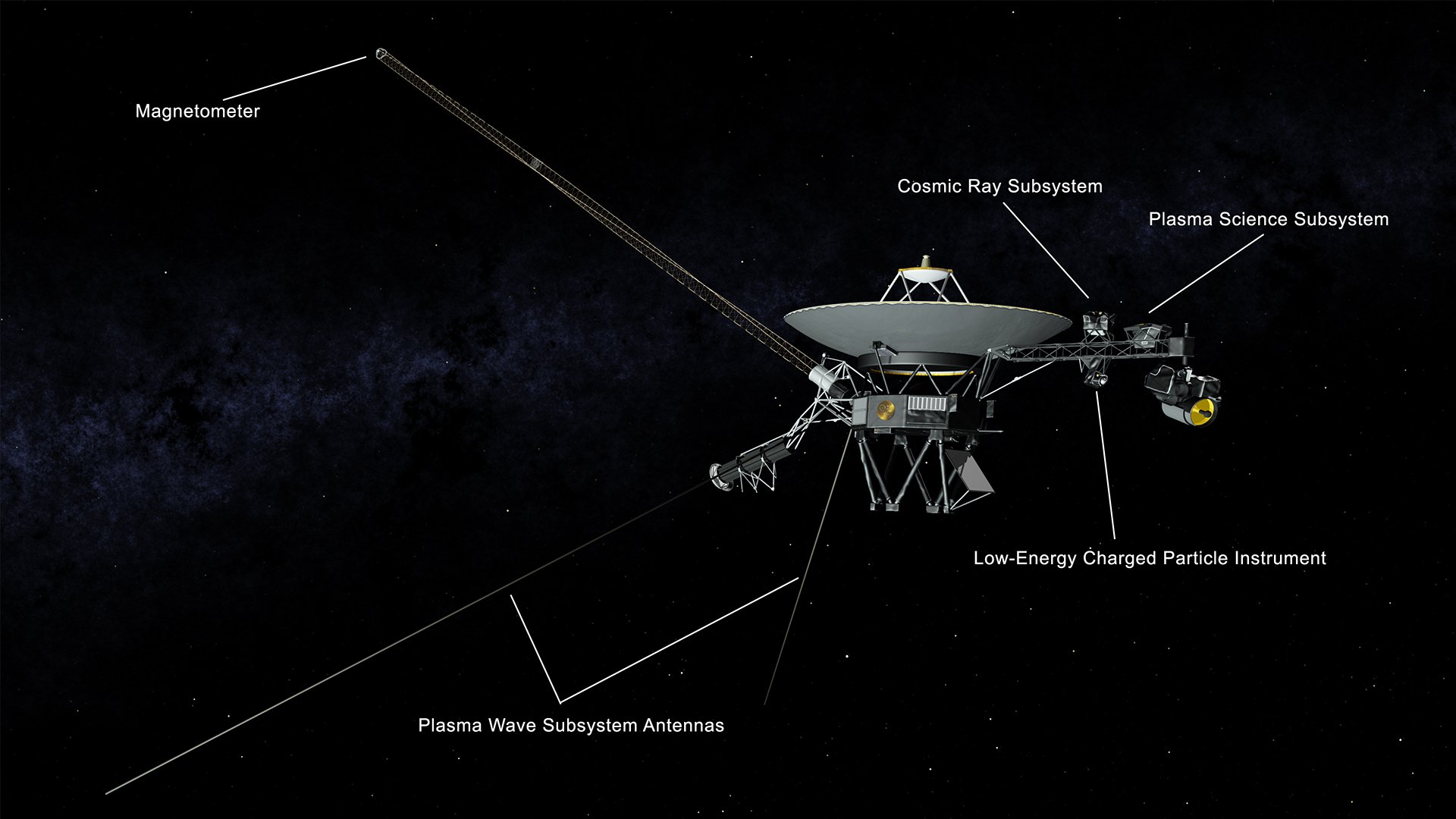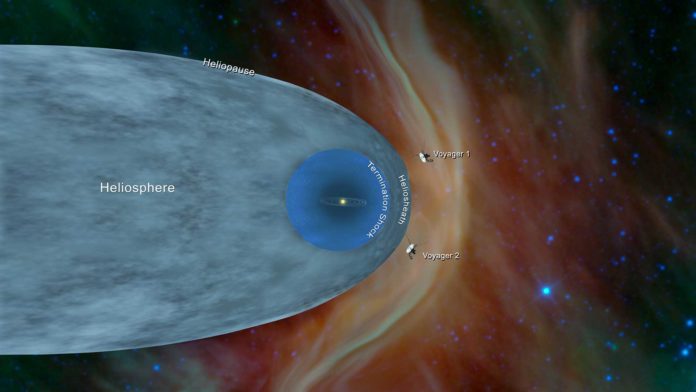For the second time ever, a human-made object has reached the space between the stars. NASA’s Voyager 2 probe currently has exited the heliosphere – the protective bubble of particles and magnetic fields created by the Sun.
According to sources, Voyager 2 now is slightly more than 11 billion miles (18 billion kilometers) from Earth. Contrasting information from various instruments on board the trailblazing probe, mission scientists determined that the probe crossed the external edge of the heliosphere on Nov. 5.
The most compelling evidence was received from its onboard Plasma Science Experiment (PLS), an instrument that stopped working on Voyager 1 in 1980, long before that probe crossed the heliopause. PLS uses the electrical current of the plasma (in space) to detect the speed, density, temperature, pressure, and flux of the solar wind.

Members of NASA‘s Voyager team will discuss the findings at a news conference at 11 a.m. EST (8 a.m. PST) today at the meeting of the American Geophysical Union (AGU) in Washington. Mission operators still can communicate with Voyager 2 as it enters this new phase of its journey, but information – moving at the speed of light – takes about 16.5 hours to travel from the spacecraft to Earth.
In addition to the plasma data, Voyager’s science team members have seen evidence from three other onboard instruments – the cosmic ray subsystem, the low energy charged particle instrument and the magnetometer – that is consistent with the conclusion that Voyager 2 has crossed the heliopause. Voyager’s team members are eager to continue to study the data from these other onboard instruments to get a clearer picture of the environment through which Voyager 2 is traveling.

John Richardson, principal investigator for the PLS instrument said, “Working on Voyager makes me feel like an explorer because everything we’re seeing is new. Even though Voyager 1 crossed the heliopause in 2012, it did so at a different place and a different time, and without the PLS data. So we’re still seeing things that no one has seen before.”
Ed Stone, Voyager project scientist based at Caltech in Pasadena, California said, “There is still a lot to learn about the region of interstellar space immediately beyond the heliopause.”
Suzanne Dodd, Voyager project manager at NASA’s Jet Propulsion Laboratory (JPL) in Pasadena, California said, “I think we’re all happy and relieved that the Voyager probes have both operated long enough to make it past this milestone. This is what we’ve all been waiting for. Now we’re looking forward to what we’ll be able to learn from having both probes outside the heliopause.”
